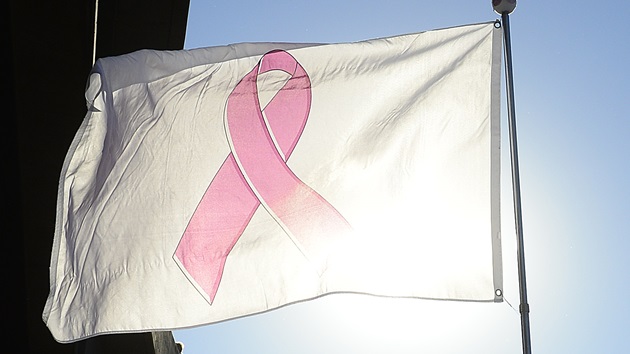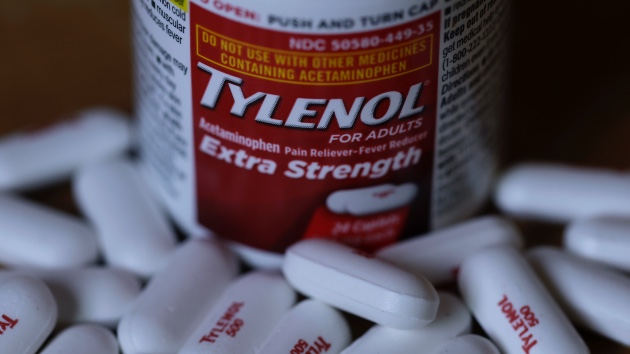US likely ‘dramatically undercounting’ current COVID-19 resurgence, experts say
Written by luck on April 13, 2022

(NEW YORK) — Although officials have been warning for weeks of an impending coronavirus resurgence across the country, health experts say it is impossible to know exactly how widespread the nation’s latest resurgence may actually be, given the declining availability of COVID-19 data.
“An effective public health response depends on high quality, real time data,” said Dr. John Brownstein, an epidemiologist at Boston Children’s Hospital and an ABC News contributor. “Underreporting, driven by changes in testing behavior, lack of public interest and severely underfunded local public health departments, create a perfect storm of misleading case counts and hospitalizations.”
Since last summer, dozens of states, along with federal agencies, have opted to scale back on regular COVID-19 data reporting. A dwindling number of states still offer daily COVID-19 data reports, with most now moving to an alternate-day schedule or even to a weekly schedule.
“With changing case definitions for hospitalizations, decreased testing, and increased use of at-home rapid tests, data on COVID-19 in the U.S. has become increasingly hard to interpret,” Sam Scarpino, the vice president of pathogen surveillance at the Rockefeller Foundation’s Pandemic Prevention Institute, told ABC News.
The significant decrease in data reporting and the nationwide decline in public testing have left health experts concerned that officials could be missing viral surges and in the dark about true positivity rates in the country, given the lack of information.
“I think that we’re dramatically undercounting cases. We’re probably only picking up one in seven or one in eight infections. So when we say there’s 30,000 infections a day, it’s probably closer to a quarter of a million infections a day,” Food and Drug Administration Commissioner Dr. Scott Gottlieb said during an appearance on CBS’ Face the Nation on Sunday. “They’re concentrated in the Northeast right now. And that’s because a lot of people are testing at home, they’re not presenting for definitive PCR tests, so they’re not getting counted.”
Health experts say official counts, which show small upticks, may actually be significantly higher than counted, as millions of Americans, who are taking at-home tests, rarely report their results to local health agencies
In consequence, testing levels are now at their lowest point since June 2020, with official test numbers dropping by more than 80% since the beginning of the year, with just half a million tests reported daily, compared to 2.5 million tests reported at the nation’s viral peak in January.
Dozens of states have also moved to shutter public testing sites, as at-home COVID-19 tests have become more accessible.
“These are uncharted waters for us with this virus,” Dr. Anthony Fauci told Bloomberg in an interview last week, reiterating that it is impossible to predict how COVID-19 will play out in the months to come.
“We are probably underestimating the number of infections that we’re having right now, because many of the infections are either without symptoms or minimally symptomatic, and you’ll miss that if people do it at home and it’s not reported to a central bank,” Fauci said.
In an effort to monitor the state of the current resurgence, scientists have been closely monitoring other metrics, including wastewater.
In the last 15 days, nearly 60% of wastewater sites monitored by the Centers for Disease Control and Prevention have reported an increase in the presence of COVID-19 in their samples.
Hospitalization data, once the gold standard, now becoming less straightforward
For many officials, monitoring virus-related COVID-19 hospitalizations has been key to assessing the state of the pandemic. However, in recent months, hospitalization data, too, has become less accessible.
Earlier this year, the Department of Health and Human Services ended the requirement for hospitals to report several key COVID-19 metrics, including a daily total of the number of COVID-19 deaths, the number of emergency department overflow and ventilated patients, and information on critical staffing shortages.
“Hospitalization data is now considered a key defining metric for pandemic severity by CDC. At the same time, with massive gaps in data from hospitals and states, it’s hard to peg these data as a gold standard by which policy decisions can be made,” Brownstein explained.
Further, certain states, such as Arizona, have stopped outright reporting of statistics including hospital bed usage and availability, COVID-19 specific hospital metrics and ventilator use.
And last week, one state — New Hampshire — quietly shifted the way it counts COVID-19 related hospitalizations to only include certain severely ill patients in its tally.
Despite an uptick in COVID-19 infections across the Northeast, officials from the New Hampshire Department of Health and Human Services are now counting COVID-19 hospitalizations by the number of individuals who are currently receiving treatment for the virus with remdesivir, dexamethasone or both therapies — a move that has left some health experts puzzled, as they say the shift may conceal the real impact of COVID-19 on the health system.
According to the state’s Department of Health and Human Services, the new metric is modeled on National Institutes of Health treatment guidelines and “provides a more accurate view of the how many people are hospitalized because of severe COVID-19 illness, as opposed to patients admitted for other health care needs who may incidentally have COVID-19.”
According to the current count, there are 10 patients receiving treatment for COVID-19 in New Hampshire. Comparatively, according to the New Hampshire Hospital Association, there are 83 COVID-19 positive patients receiving care across the state.
“One of the most important metrics has been the total number of people hospitalized with confirmed COVID-19, used by state leadership, hospitals and public health to monitor severity of illness and the prevalence of COVID-19 in New Hampshire,” Steve Ahnen, the president of the New Hampshire Hospital Association, told ABC News.
At this time, nationally, there is still no clear number of how many patients are admitted to the hospital for COVID-19 and how many people have coincidentally tested positive for the virus after they were admitted for other reasons.
Experts say these totals likely vary widely, community by community, and a COVID-19 diagnosis, regardless of the reason behind initial admission, can cause additional strain on a health system.
“Unfortunately, the pandemic has continually exposed the fragile infrastructure of which these data are collected. And now at this late stage in the pandemic, data collecting efforts are starting to fracture even further,” Brownstein added.
‘The pandemic phase of COVID-19 is not yet over’
In the wake of the Gridiron dinner in Washington, D.C., where more than 80 top officials, politicians and journalists — all fully vaccinated — tested positive, health officials from the White House began to shift their messaging surrounding risk levels.
“What’s going to happen is that we’re going to see that each individual is going to have to make their calculation of the amount of risk that they want to take,” Fauci said on ABC’s This Week on Sunday.
Such messaging has raised questions from some health experts who suggest that the U.S. may be leaving some vulnerable Americans behind.
“We’re at a time when U.S. public health authorities are basically declaring ‘People, you’re on your own’ when it comes to determining how to co-exist with COVID-19. Sadly, the tools we’ve relied on to determine risk levels are being discounted at best and discontinued at worst,” Dr. Maureen Miller, professor of epidemiology at Columbia University’s Mailman School of Public Health, told ABC News. “It seems we’re trying to have it both ways: People are responsible for their own decisions about risk taking as the pandemic continues but are denied the tools to make informed decisions.”
Early, proactive measures to slow transmission, such as indoor masking, will prevent more extreme measures later, Scarpino said, adding, “Saving lives and livelihoods is what good public health is all about.”
Even if this current surge, due to the omicron subvariant BA.2, is not as explosive as the previous strains, it will still likely take hold in vulnerable parts of the country, Miller said.
“COVID-19 has thrown so many curve balls. It has also provided so many predictable events. Every surge in Europe has preceded a surge in the U.S. Why should this time be different?” Miller explained. “The pandemic phase of COVID-19 is not yet over. We should treat it with the respect that it deserves.”
Copyright © 2022, ABC Audio. All rights reserved.





